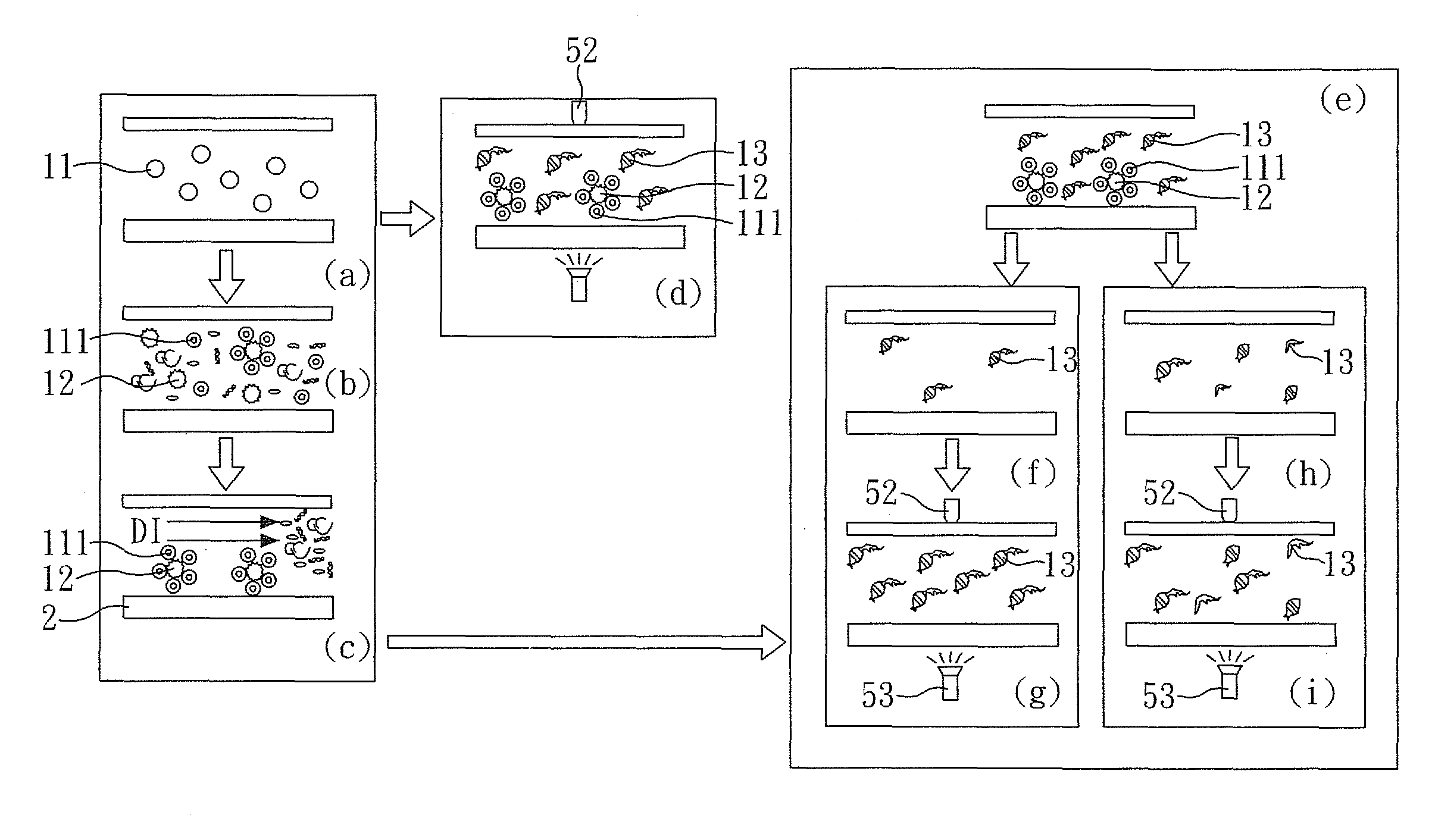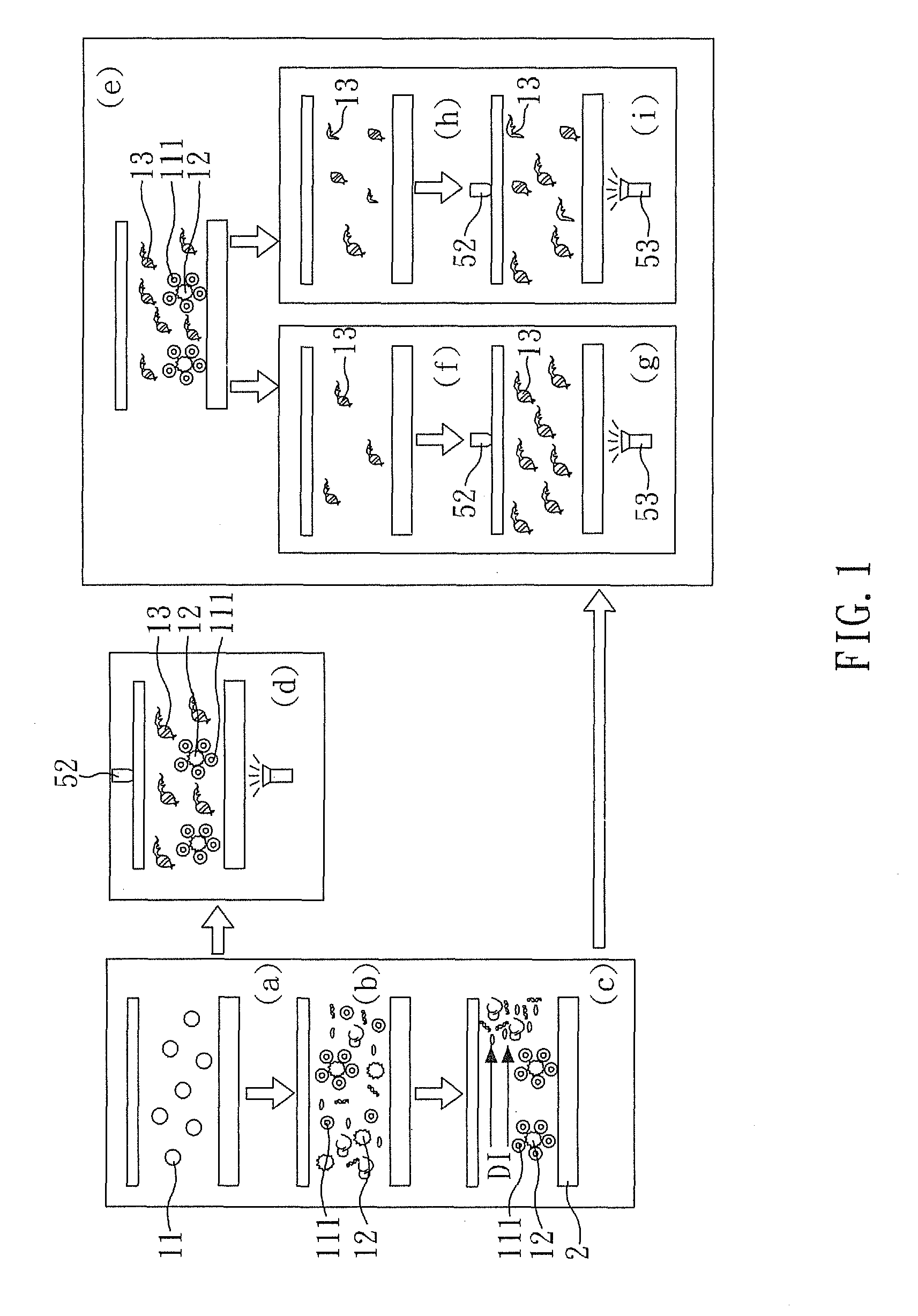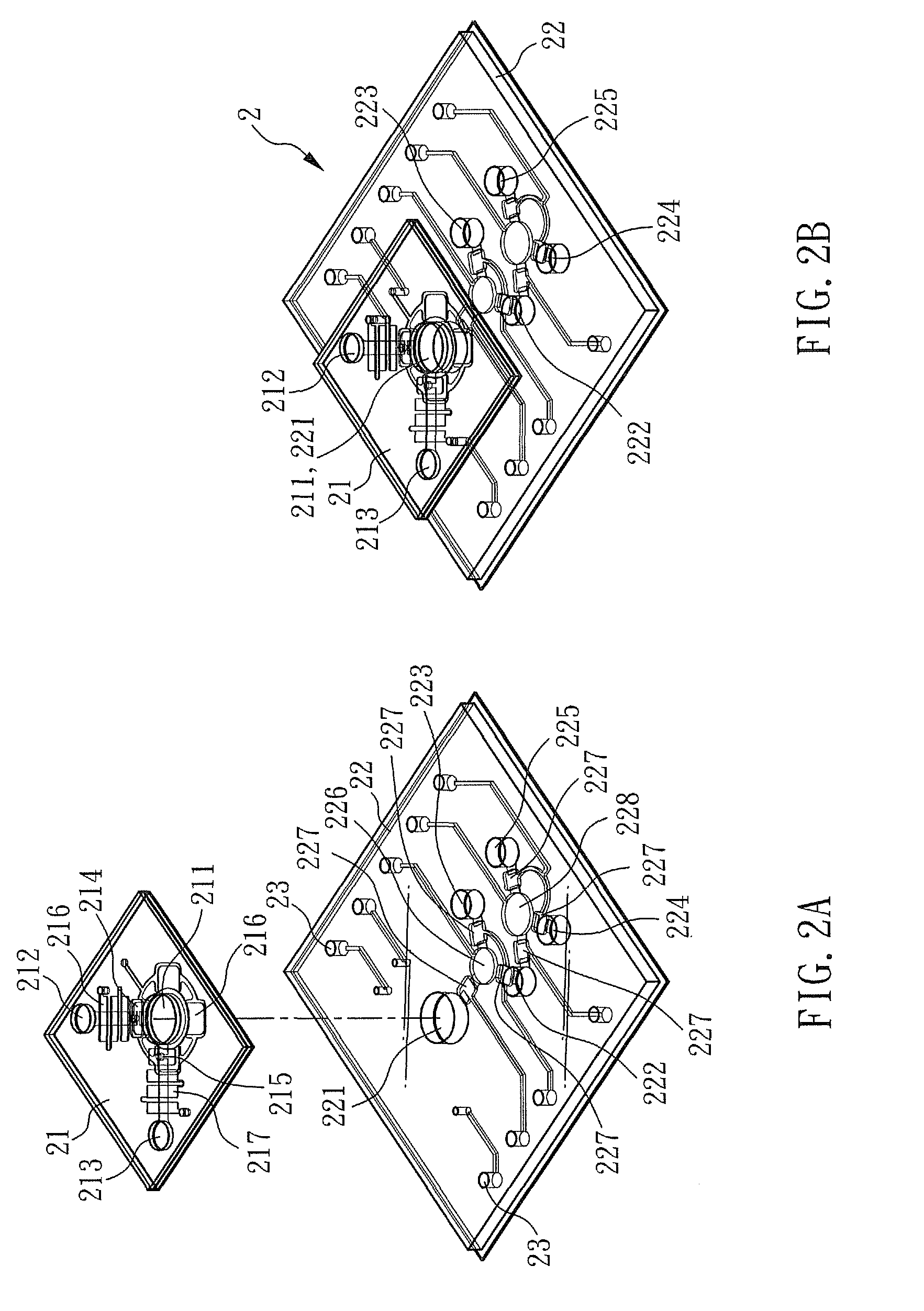Method for detecting mitochondria gene alterations
a technology of mitochondria and gene alterations, applied in the field of mitochondria gene alterations detection, can solve the problems of cell death, high cost of material and the device required for its operation, and the technicality of direct dna sequencing
- Summary
- Abstract
- Description
- Claims
- Application Information
AI Technical Summary
Benefits of technology
Problems solved by technology
Method used
Image
Examples
embodiment 1
[0047]FIG. 1 is a perspective view showing a method for detecting mtDNA alterations of the present embodiment, FIG. 2A and FIG. 2B are respectively a exploded view and a perspective view showing a device for detecting mtDNA alterations of the present embodiment, and FIG. 3 is a perspective view showing a system detecting mtDNA alterations of the present embodiment.
[0048]As shown in FIG. 2A and FIG. 2B, the device for detecting mtDNA alterations of the present embodiment comprises: a purification unit 21 containing a first reaction chamber 211 and a separation-element storage chamber 212, wherein the separation-element storage chamber 212 connects to the first reaction chamber 211 through a first pump 214; and a detection unit 22 disposed under the purification unit 21, wherein the detection unit 22 comprises: a second reaction chamber 221 and a detecting-sample chamber 224, the second reaction chamber 221 connects to the first reaction chamber 211, and the detecting-sample chamber 2...
example 1
[0062]The device, the system and the method for detecting mtDNA alterations according to Embodiment 1 are used in the present example. The device, the system and the method used in the present example are the same as those in Embodiment 1, so the detailed description is omitted herein.
Mutated Mitochondria Gene (mtDNA) Group
[0063]Magnetic beads (1.08 μm, Dynabeads® MyOne™ Carboxylic Acid, Invetrogen, USA) surface-immobilized with specific DNA fragments were used, wherein the sequence of the DNA fragments was TGGTATTTTCGTCTGGGGGGTATG (SEQ ID NO: 1); the washing solution was de-ionized water (DI); the cell lines were Lu03 (cell lines with A3243G point-mutated mtDNA); the primer pair of the amplification solution added into the mitochondria-gene checking chamber had sequences shown in the following Table 1 (as shown in SEQ ID NOs: 4 and 5); the used restriction enzyme is ApaI, which can digest the sequence with A3243G point-mutated mtDNA but not digest normal mtDNA without mutations); t...
example 2
[0070]The device, the system and the method for detecting mtDNA alterations according to Embodiment 1 were used in the present example to detect mtDNA with 0, 30, 60, 90, 100% mutation degree. The mutation degree means the ratio of mutated mtDNA in total amount of extracted mtDNA in the sample.
PUM
| Property | Measurement | Unit |
|---|---|---|
| temperature | aaaaa | aaaaa |
| temperatures | aaaaa | aaaaa |
| temperatures | aaaaa | aaaaa |
Abstract
Description
Claims
Application Information
 Login to View More
Login to View More - R&D
- Intellectual Property
- Life Sciences
- Materials
- Tech Scout
- Unparalleled Data Quality
- Higher Quality Content
- 60% Fewer Hallucinations
Browse by: Latest US Patents, China's latest patents, Technical Efficacy Thesaurus, Application Domain, Technology Topic, Popular Technical Reports.
© 2025 PatSnap. All rights reserved.Legal|Privacy policy|Modern Slavery Act Transparency Statement|Sitemap|About US| Contact US: help@patsnap.com



